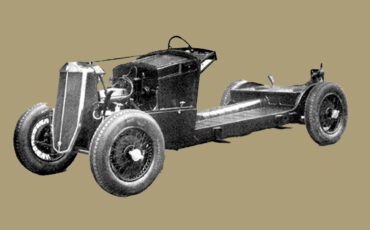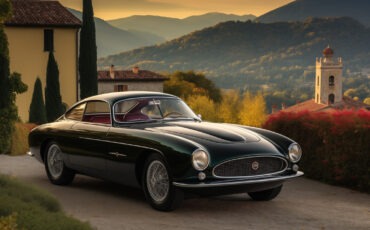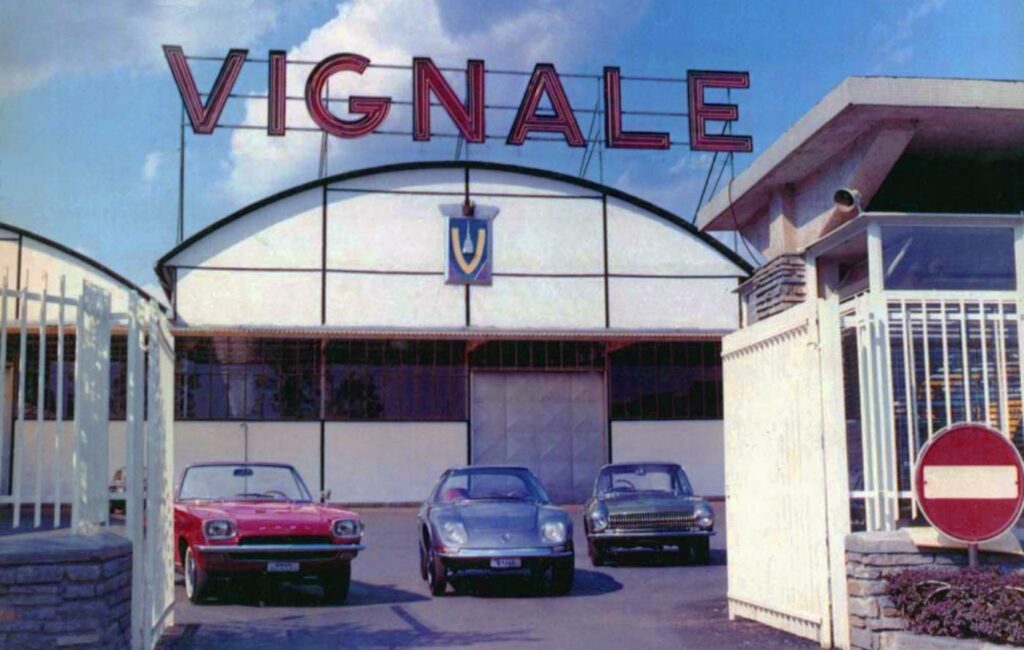
The early years
AIfredo Vignale with his company was not part of the bright generation of Turin coachbuilders of the first period, although he had worked at a very young age at Pinin Farina and Stabilimenti Farina, both of which had shaped his skills of sheet beater. Born on June 15, 1913, Alfredo learned the art of transforming an nude motor chassis into a splendid automobile in the early years of the last century. In 1930 he came into contact with the newborn Pinin Farina, founded in that year by Battista Farina, who broke away from Stabilimenti Farina, the atelier of his older brother Giovanni. Alfredo’s ability to shape the aluminum sheet with the aid of working tools into body sculptures, was consolidated over time, and this mastery in such a creative profession whose secrets were unveiled to him by Felice Mario Boano and Pietro Frua – enabled him in the second half of the 30’s to take over the leadership of the bodywork department at Giovanni Farina’s company, which at the time had almost a thousand employees including his father Francesco and the brothers Eusebio and Guglielmo. The brilliant manual skills of the young craftsman and his tireless dedication to work clearly forged his professional connotations, which nevertheless had no way of finding adequate expression during the years of the Second World War. Thus it was that Alfredo’s great aspiration, that of taking the fateful step of setting up his own business, had to wait until the immediate postwar period. On October 26, 1946, Carrozzeria Vignale & C was established with headquarters in via Cigliano 29/31.
The beginning
Alfredo Vignale not only was a master in sheet metal shaping, but he was also into drawing, since he had attended a three-year evening course at very young age in which he learned how to design sketch. At the age of 17, in 1930, he had already gained experience as a sheet beater at the Ferrero and Morandi workshop, from which, as mentioned, he moved to Pinin Farina, in the great temple just consecrated of the Italian bodywork. The modest workshop in via Cigliano extended over about a thousand square meters, where the new entrepreneur tried his hand at 33 years of setting up the sporadic Fiat and Lancia production chassis, which were joined by Cisitalia, the new brand with which Piero Dusio cherished in 1946 the ephemeral dream of playing an important role as master of sports cars. It was Dusio himself who discovered the extraordinary talent of Vignale in sheet metal modeling for the aerodynamic 202 MM berlinetta designed by Giovanni Savonuzzi for the 1947 Mille Miglia.
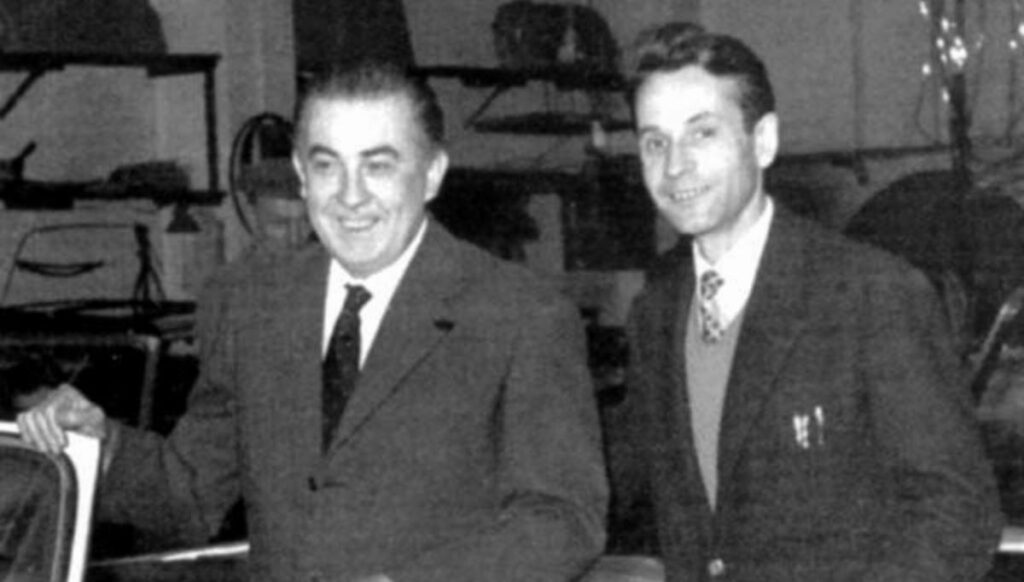
That same year Alfredo had already highlighted himself with a fortunate interpretation on the chassis of a crashed Fiat Topolino, the result of which drew an approving comment also from Pinin Farina himself. 1947 marked a significant year for Vignale in his approach to the automotive sector, who manifested his official debut with the Fiat 1100 cabriolet, presented at the Concorso d’Eleganza of Turin, which was followed by the Fiat 1500 two-seater cabriolet, a car that was exhibited at the Concorso d’Eleganza of Florence, and which was presented the following year at the Grand Prix d’Europe in Juan-les-Pins, France. In September 1948 the 31st edition of the Motor Show was inaugurated in the exhibition center at the Parco del Valentino in Turin, which symbolized, for the first time after the war, the rebirth of car production in Italy. Vignale was present with a stand which featured a Lancia Aprilia, a berlinetta on a Fiat 1100 B chassis and an Alfa Romeo 6C 2500 cabriolet.
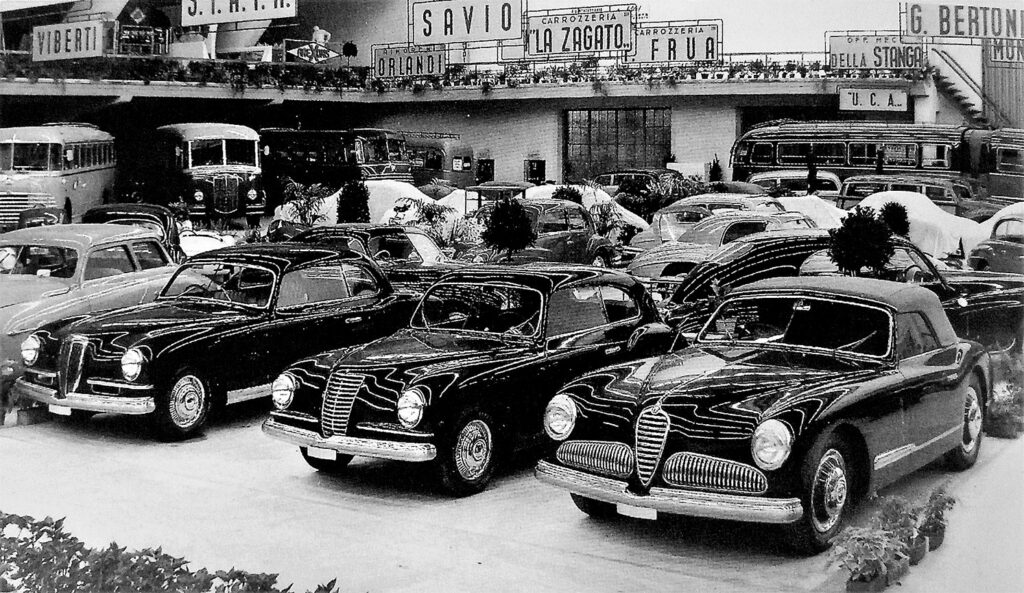
Alfredo’s feverish activity in proposing new stylistic interpretations began in 1949 with the collaboration of Giovanni Michelotti, who had left his job as designer at Stabilimenti Farina and decided to became freelance designer. He worked intensely as consultant for half a dozen coachbuilders, but his collaboration with Vignale was prevalent, for which the young designer created over a thousand sketches, giving life to new era of Italian custom-built cars. The first important order obtained by Vignale was the small series production in 1949 of the Cisitalia 202 B, of which Pinin Farina had built the first speciments. It allowed the new entrepreneur to emerge from the initial heroic period, during which he had worked hard to produce bicycle mudguards, aluminum pots and iceboxes, until he was able to devote himself definitively to the creation of custom-built car bodies.
The success
Vignale made a name for itself quickly when in spring 1950, he created after a design of Michelotti, the Orchidea built on the chassis of the brand new Fiat 1400, a car that was exhibited at the Turin Auto Show together with six other cars. In that same exhibition, Vignale was also present at the Abarth stand with the splendid 204 A, a low and sleek berlinetta, characterized by three small air vents on the sides, which later became Vignale’s trademark element for its sports cars. In addition to those, another huge and exotic car appeared at the Turin show that year: it was the Packard Eight cabriolet.
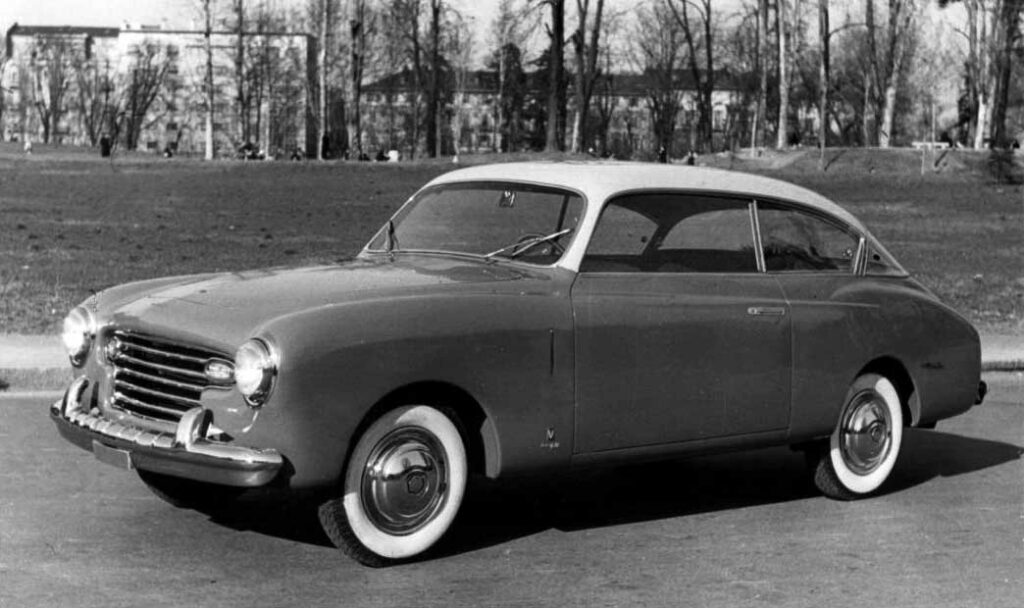
In contrast to the evolution of many Italian coachbuilders in the 1950s and 60s which tended to adapt their production to a semi-industrial reality, Vignale remained faithful to a artisanal approach of his business, which allows him to keep his work according to the formula of unique pieces or almost, built in a maximum of a dozen units of the same design; each of it however differ from the others for some personalization touches, which helped to emphasize the image of his exclusive creator. Vignale distinguished himself in those years with an overwhelming interpretative personality, formed by his youthful experiences as a sheetbeater and by the exceptional ability to transfer the shape plan sometimes traced with chalk on the floor onto the sheet metal.
In his singular role as coachbuilder animated by a strongly innovative spirit. Vignale expressed himself with cars that were sometimes sober, sometimes complicated and extravagant. On his creations, often in contrast with the stylistic school of that time, the inspiration of Giovanni Michelotti influenced a lot. Their bodies were all splendid testimonies of an obsessive research for detail, in which an unprecedented stylistic message full of pure functionality always stands out. Significant examples are still today the chromed air vents mounted on the sides of the bonnet; or the large triangular profile slits behind the rear wheel arches to improve brake ventilation; or the eccentric location of the tail lights mounted in special chromed positions embedded in the mudguards.
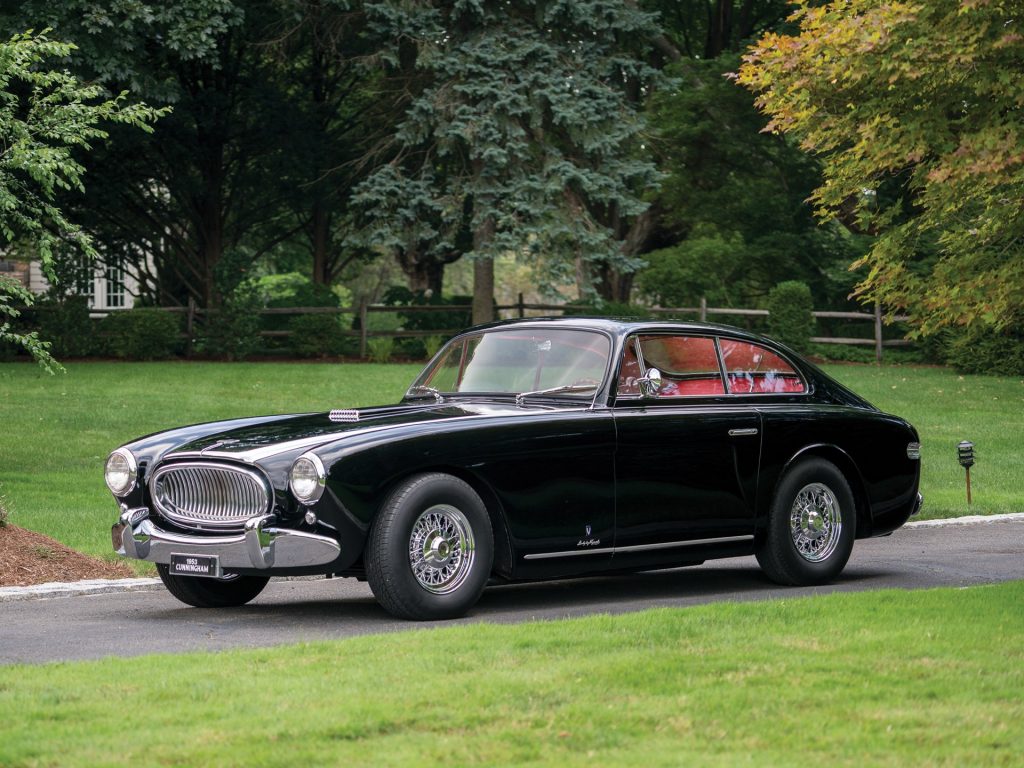
Vignale’s projection towards foreign markets was actively and almost immediately expressed towards the Anglo-Saxon world, starting with the 1951 proposal for the new Riley Pathfinder and then with the American Cunningham, whose Continental model The 1952 C-3 is perhaps one of the most elegant post-war coupes ever built. The constant presence of Giovanni Michelotti alongside Vignale was decisive into projecting the coachbuilder from via Cigliano into the firmament of the most famous international fitters. The creative intuition of the designer and the mastery of the Alfredo as builder, both expressed themselves with shapes of great originality: the Vignale creations were fascinating cars, sometimes transgressive, full of strong personality and which caught the attention of the royal families of the whole world, like King Baudouin of Belgium who commissioned a exclusive coupé built in 1955 built on an Aston Martin DB2 / 4 chassis.
From GT's to more populare cars
The exciting and active encounter with Ferrari (read our special here) ended in 1954 with the splendid 250 Europa GT (chassis nº 0359 GT) built for the Belgian princess Liliane de Réthy (second wife of King Leopold III), considered one of the most balanced designs of the cavallino brand. Following their construction of the Aston Martin DB2/4, another car for the royal family of Belgium, Vignale began incorporating the crown into their emblem, signifying their role as coachbuilders to royal families.These were years of great fervor, during which the well-known Turin coachbuilder, so prolific in new solutions and quickly becoming an exponent of the post-war Italian stylistic school, dedicated himself with inexhaustible eclecticism to creating very different cars, such as the Alfa Romeo 412 with which Felice Bonetto won sixth place overall in the 1951 Mille Miglia (read our special here), or the barchetta Maserati A6 GCS, built in 1953 (chassis number 2049) with long exhaust pipes, which acted as innovative aesthetic elements. His creative flair was not limited only to GT cars, but Vignale also expressed himself with some popular and extravagant cars, such as the Spiaggia, made in a good number of specimens in 1956 on the mechanics of the Fiat 600 Multipla. and that contributed to a large extent to fuel the ephemeral line of small cars for transporting bathers to the most fashionable holiday locations.

Without forgetting the 1953 Fiat 1100 Charmant, a pleasant coupe with a sloping tail set up on the chassis of the normal 1100/103 and of the 1100/103 TV with 50 HP engine. This was one of the first small series productions, which were followed by numerous others at the end of the 1950s, in particular on the Fiat 600 chassis, a formula that gave life to the well-known generation of the “Vignalines” produced in various series with a daily production that reached the forty units. A futuristic concept car was also built on the same mechanics after a design by Michelotti, the Fiat Abarth 750 Goccia, which was introduced in 1957 to ennoble those mini-series of small 600s with a custom style. The first prototype characterized by gull-wing opening doors was followed by a second one, with traditional doors, which participated in the last Mille Miglia ever in history with the primary aim of testing out the aerodynamics of its compact bodywork. Entrusted to the Luino-Costa crew, the Goccia finished the race in a 94th place overall after having covered 1597 kilometers at an average of almost 113 km/h.
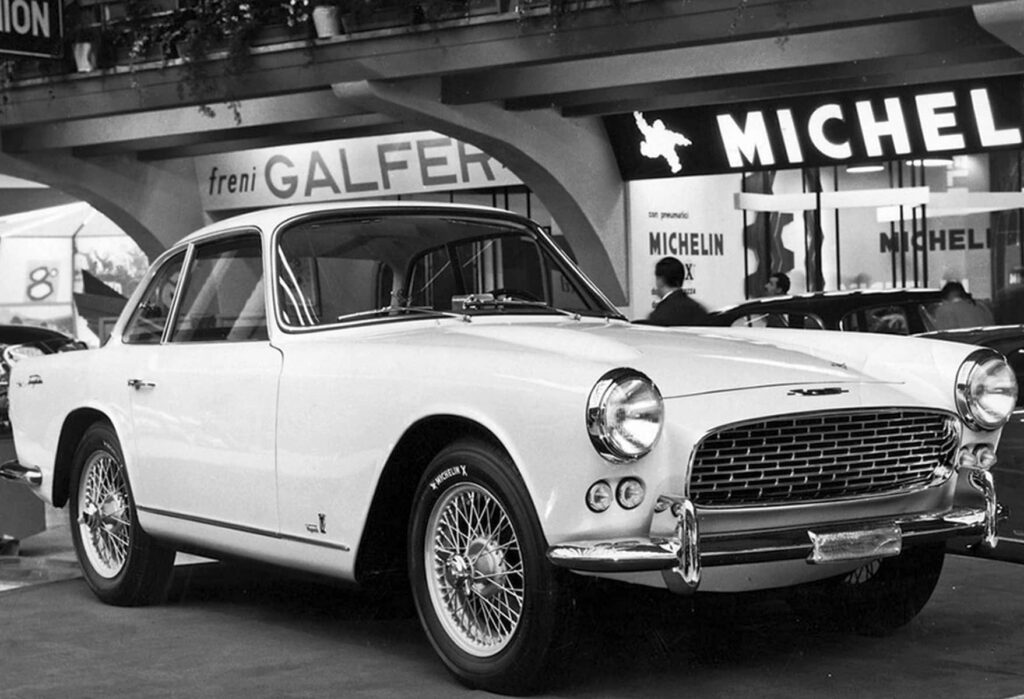
In 1957 the English Standard-Triumph group turned to Vignale to create the bodywork of its new vehicle with a innovative mechanic concept, for which it was necessary to fit a design characterized by a strong personality. The Turin coachbuilder proposed a unusual car designed by Michelotti, which debuted on the market in 1959-1960 with three versions: sedan, coupé and convertible. The Triumph Italia 2000 coupé, completely restyled by Michelotti on the chassis of the spider TR3, was also presented at the 1958 Turin Auto Show, which was then produced by Vignale in just over 300 units between 1959 and 1962. The annual sequence of the Turin Motor Show clearly marked the stylistic evolution underway at Vignale and this also happened punctually in 1955, when the stand of the Turin coachbuilder polarized a sensational influx of visitors to admire the provocative red and black bodywork of the Démon Rouge, an extraordinary coupé of a deliberately counter-trend line built on the chassis of the Fiat 8V (1996 cm³, 105 CV). A show car built to amaze with its curious pavilion with a cantilevered roof on the rear window.
The need for a new factory
Vignale launched in 1957 its most important order for a major manufacturer, the Lancia Appia Convertibile, a car that immediately highlighted the difficulties of meeting market demand due to the lack of space in the workshop in via Cigliano; he tried to remedy in emergency by renting a warehouse of 400 square meters nearby. However, the situation required a radical remedy, following the example of what had already happened for Pinin Farina and Bertone, which transferred the plants to Grugliasco. In the same place Vignale therefore built the new factory in Strada del Portone 177, a plant that was officially opened in August 1961 with an area of 12,000 square meters and which marked the change of the artisanal activity for a semi-industrial production.
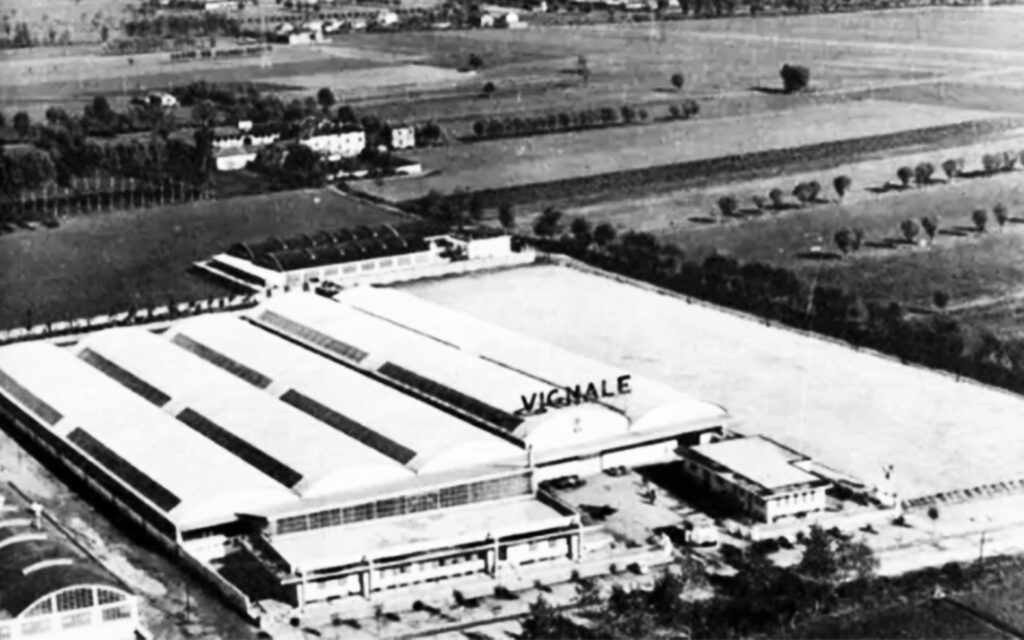
The demand for high quality built cars of foreign markets and a certain orientation of Italian customers towards GT’s, led Maserati to unleash in 1957 the 3500 GT model which was joined by the Spyder version unveiled at the 1960 Geneva Motor Show. Based on a design by Michelotti it became one of the most sought-after cars by the young generation of the 1960s. Built on a 2500 mm wheelbase (shortened by 100 mm compared to the coupé), the Maserati spyder offered a very attractive low and slender line. Powered by the 3.5-liter twin-shaft 6-cylinder engine (220 HP), it exhibited great road skills, with peaks of maximum speed above 220 km/h; Vignale delivered 250 examples between 1960 and 1964. In 1962 at the Geneva Motor Show, Vignale also launched the Maserati Sebring coupé , built on the same short wheelbase chassis as the spider and powered by the same 3.5-liter engine (3485 cm³); from 1965 the engines available were 3.7 (3694 cm³) and 4 liters (4014 cm³), with powers up to 265 HP. The Sebring remained in production until 1968 for a total of 600 units. Also on behalf of the House of the Trident, the Turin coachbuilder set up the Mexico coupé which debuted at the 1966 Paris Motor Show and the four-seater Indy coupé built 1104 speciments from 1969 until 1975.
When the Appia convertible went out of production, Lancia replaced it in 1962 with the new Flavia 2+2 cabriolet, whose production was again entrusted to Vignale starting from a sketch by Michelotti, which was the last made for the Turin coachbuilder. The latter had in fact decided to found his own coachbuilder company. That was not a consensual separation, which satisfied Michelotti’s legitimate aspirations but which dissolved a formidable duo.
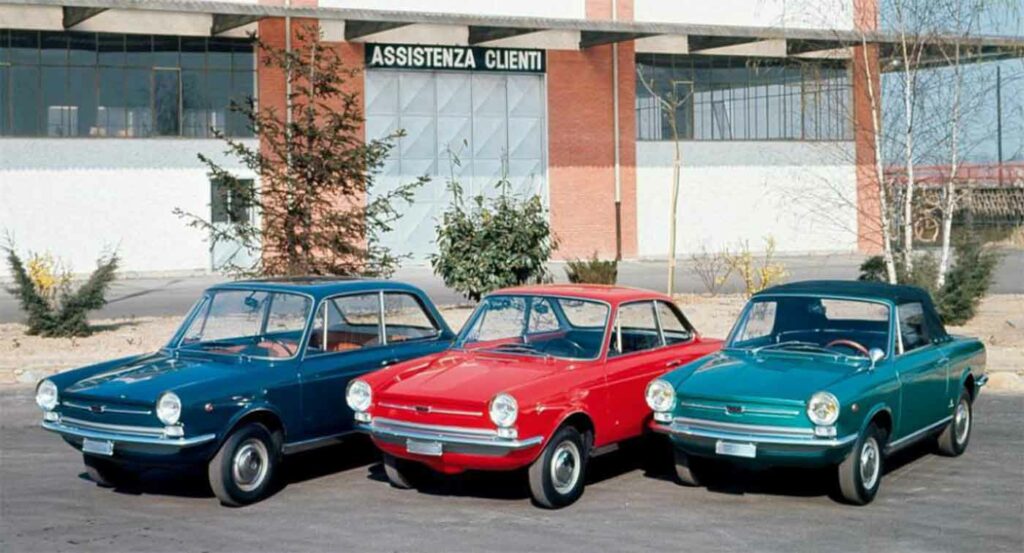
In January 1963, Virginio Vairo became chef designer of Vignale. Vario came from Pininfarina, but he lacked that exceptional charge of creativity that his predecessor had shown off; even the interpretative vein of Alfredo Vignale was affected by that detachment. At the 1964 Turin Motor Show the stand of the Turin coachbuilder unveiled a trio (berlina, coupè and spider) fitted on the mechanics of the new Fiat 850, while two years later Vignale built the AMX Project IV, an original coupé designed by Richard Teague. Teague devised the solution of the cantilevered roof over the passenger compartment and that of two “emergency” seats obtained in the trunk, according to a very popular formula in America in the 1920s and 1930s. The AMX debuted on the US market in 1968 and remained on the list for a couple of years.
The decline
With a staff of about two hundred people, Alfredo Vignale built the Jensen Interceptor and the FF, a refined four-wheel drive car with a Chrysler 6.3-liter V8 engine (330 HP) for the 1966 London Motor Show. A year later Vignale unveiled the Samantha coupé on the Fiat 125 platform and the Gamine, a curious spider built on the Fiat 500 mechanics, whose line recall the ones of a sport two seater of the Thirties, in particular inspired by the famous Balilla Coppa d’Oro. Among his latest proposals of 1967 appeared the controversial station wagon on Ferrari 330 GT 2 + 2 mechanics and the prototype of the impressive Tatra 613 representative sedan with rear V8 engine.
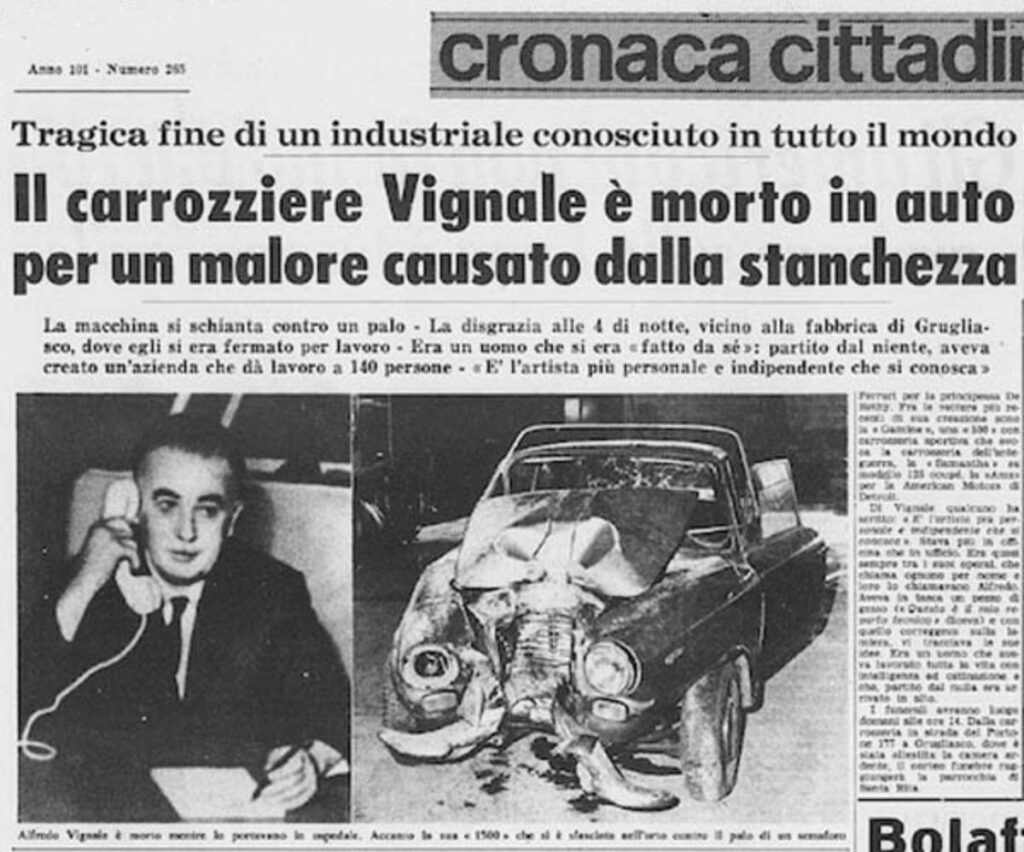
Alfredo Vignale disappeared at the age of fifty-six in an obscure road accident on the morning of November 16, 1969. One of the greatest architects of the Italian bodywork, an outstanding sculptor of the contemporary age, left this world. As an independent entrepreneur, in just over twenty years he experienced the irresistible euphoria of the artist of exceptional talent, who found complete recognition when, at the end of 1966, he was awarded the Commander of Merit Cross of the Italian Republic.
The last production model was in 1970 the Fiat 850 Coupé, when the company’s decline was almost upon us, sanctioned by a drastic cut in daily production (only six speciments of the Fiat 124 Eveline, a dozen Gamines and a Maserati model a day). The factory soon had to face, like others in the sector, serious financial difficulties and De Tomaso, which at the time had already bought Ghia with the support of the Ford Motor Company, concluded the negotiations for the purchase of the Grugliasco plant. At the Turin Motor Show in November 1970, Vignale’s last public appearance, the proposal for a city car was presented, a topic that had already become important at the time. In the meantime, De Tomaso formalized the sale of Ghia and Vignale to the Ford Motor Company.
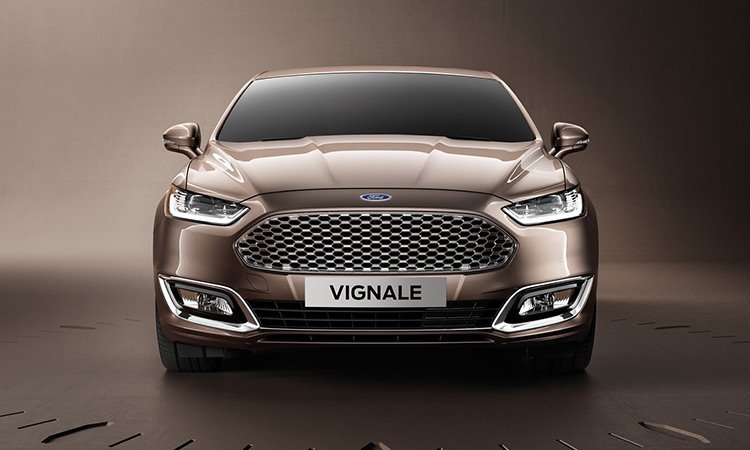
With all its assets, the company was liquidated and the Vignale brand nevertheless continued to qualify the image of the prototypes presented by Ford at the various international car shows. Since 2010, the name Ghia has lapsed from the Ford range, while that of Vignale reappeared at the 2013 Paris Motor Show to boast an exclusive set-up of the new Mondeo (launched in Europe in 2014), which went into production in 2015, and, at the Paris 2016 the complete Vignale range appeared: Mondeo, S-Max, Edge and the Kuga concept.
Source:
01. Wikipedia
02. “I Capolovori dello Stile: Ghia-Vignale” by Luciano Greggio – Ruoteclassiche

